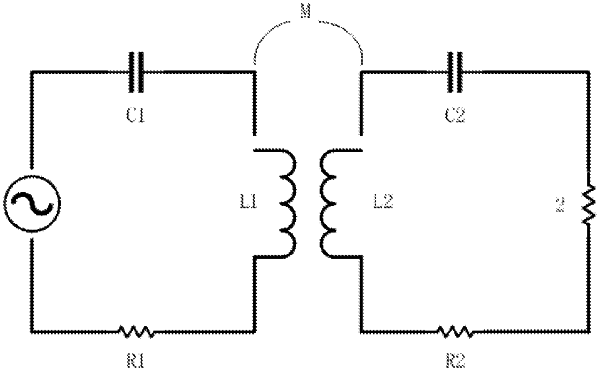| CPC H02J 50/005 (2020.01) [H01F 6/06 (2013.01); H02J 50/12 (2016.02)] | 2 Claims |

|
1. An assembly method of the high-temperature superconducting suspension type wireless power transmission device, comprising the following steps:
step one, designing a transmitting end circuit; the transmitting end circuit comprises an alternating current power supply, the alternating current power supply is electrically connected with a transmitting coil through a first compensation capacitor, the transmitting coil is electrically connected with a first resistor, and the first resistor is electrically connected with the alternating current power supply to form a first LC series resonance network; the transmitting coil is made of high-temperature superconducting materials;
step two, designing a receiving end circuit; the receiving end circuit comprises a receiving coil, the receiving coil is electrically connected with a suspended matter through a second compensation capacitor, the suspended matter is electrically connected with a second resistor, and the second resistor is electrically connected with the receiving coil to form a second LC series resonance network; the receiving coil is formed by winding a copper coil; the receiving coil is fixed right below the suspended matter and electrically connected with the suspended matter, and the receiving coil is located right above the suspended matter; strip-shaped permanent magnets are fixed to the bottom of the suspended matter and uniformly distributed on the periphery of the receiving coil;
step three, relatively selecting the output frequency of the transmitting coil and the values of the first compensation capacitor and the second compensation capacitor so that the circuit is maintained in a resonant state;
step four, according to a critical state Bean model, through the critical current density of the transmitting coil and the total magnetic field intensity of the permanent magnets at different positions, obtaining the levitation force of different positions right above the transmitting coil; calculating the number of the permanent magnets needing to be fixed at the bottom of the suspended matter according to the weight of the suspended matter and the lowest height needing to be suspended; and
step five, cooling the transmitting coil under the condition of no magnetic field by using a zero-field cooling mode until the transmitting coil reaches a superconducting state;
placing the suspended matter at a preset suspension height, and aligning the transmitting coil and the receiving coil to complete assembly;
when the high-temperature superconducting suspension type wireless power transmission device is used, the height of the suspended matter is adjusted by adjusting the current size of the transmitting coil, and charging is performed at the same time.
|